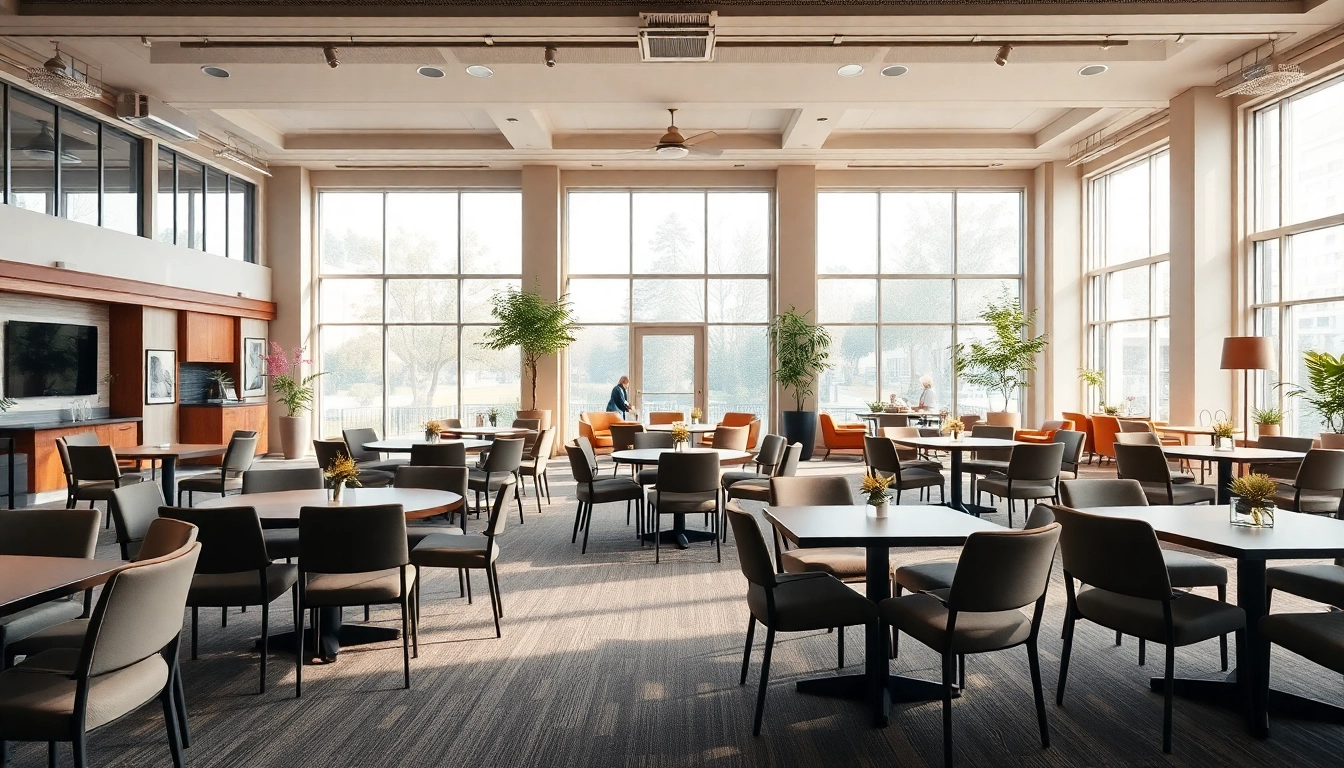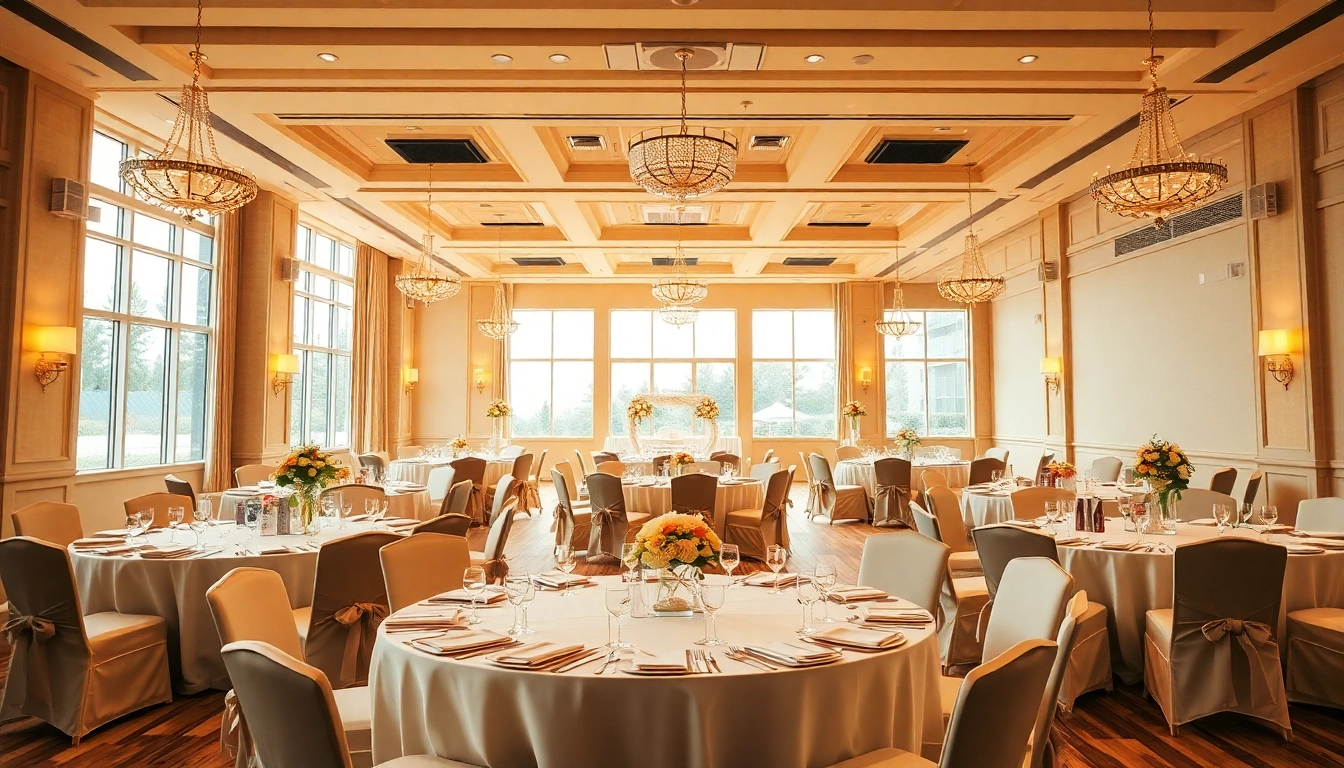Understanding the Importance of an Event Space
Choosing the right event space is more than just selecting a venue; it can be a pivotal factor in the success of your event. An ideal space can create a lasting impression, facilitate interaction among guests, and support the overall event goals. Therefore, understanding the significance of the event space is crucial for any planner, organizer, or business looking to host impactful gatherings.
Why the Right Event Space Matters
The right event space contributes significantly to the atmosphere, engagement, and accessibility of an event. A thoughtfully chosen venue can enhance the overall experience for attendees, fostering not only appreciation but also participation. Consider an intimate gathering in a cozy venue versus a large, impersonal ballroom; the former naturally encourages more interaction and connection among guests. Key reasons why the right event space matters include:
- Impact on Mood: The ambiance created by the design, colors, and layout can massively impact guests’ moods and perceptions.
- Facilitates Networking: Thoughtfully designed spaces can encourage mingling and networking, crucial for events like conferences and trade shows.
- Supports Logistics: The location and layout of the venue affect the flow of the event, accessibility for vendors, and ease for guests in terms of transportation.
- Brand Reflection: A well-chosen venue reflects the brand’s image and values, whether it is modern and innovative or classic and elegant.
Factors Influencing Event Space Selection
Several factors can influence the selection of an event space, making it vital for planners to carefully assess their options:
- Size and Capacity: Understanding the number of expected attendees is crucial. A space too large can feel empty and diminish the energy of the event, while a space too small can lead to overcrowding and discomfort.
- Location: Proximity to transport links, parking facilities, and accommodations can significantly affect attendance. A centrally located venue may attract more participants.
- Services and Flexibility: Venues that offer additional services such as catering, audio/visual support, and decor can lighten the logistical load on planners.
- Cost: Budget constraints will always play a critical role in decision-making. Understanding hidden costs such as insurance fees, deposits, and overtime charges is essential when comparing venues.
Common Mistakes When Choosing an Event Space
While selecting an event space, it’s easy to overlook critical aspects. Here are common mistakes to avoid:
- Rushing the Decision: Taking the time to visit multiple venues and consider various options is crucial. Rushing can lead to a poor fit between the venue and the event purpose.
- Ignoring Venue Restrictions: Many venues have specific rules regarding decorations, catering, and entertainment. Failing to understand these will lead to complications down the line.
- Neglecting Accessibility: Ensuring the venue is accessible for all attendees, including those with disabilities, is more than a courtesy—it’s a legal obligation.
- Underestimating Setup and Breakdown Times: Time needs to be allocated not just for the event itself but for setup and breakdown. Underestimating this can lead to rushed preparations.
Key Features to Look for in an Event Space
As you prepare to evaluate potential venues, focusing on key features can streamline your selection process. Here are essential attributes to consider:
Layout and Design Considerations
The layout of an event space can significantly influence attendee engagement and comfort. Here’s how to evaluate this aspect:
- Flow and Accessibility: Consider how guests will move through the space. Is there a clear path from entrance to main activities? Are stations and amenities easily accessible?
- Versatility: A space that can be adapted for different setups (e.g., theater, banquet, classroom) allows for greater flexibility in presenting and engaging with your audience.
- Natural Light: Spaces with ample natural light tend to be more inviting and can significantly enhance the mood of an event.
Amenities and Facilities Offered
Beyond just aesthetics, practical amenities can make or break an event. Evaluate these important features:
- Technology: High-quality sound systems, lighting, and projection capabilities are vital, especially for corporate events where presentations are common.
- Catering Options: Consider if the venue provides in-house catering or allows external catering. Quality food can greatly elevate attendee satisfaction.
- Restroom Facilities: The availability and cleanliness of restrooms can affect the comfort of your guests, so ensure that these facilities are adequate for the expected crowd.
Location Accessibility and Convenience
Location is a critical factor that dictates attendance and convenience for your guests. Here’s how to assess the location:
- Transport Links: Proximity to public transportation and major roads simplifies the journey for attendees, especially if they are coming from various areas.
- Parking Availability: Consider available parking options for attendees driving to the event. Valet parking, street parking, and lot availability can influence your decision.
- Nearby Accommodations: For multi-day events or attendees traveling from afar, having nearby hotels or accommodations can be a significant advantage.
Tips for Planning Your Event in an Event Space
Planning an event is an intricate process, but with careful consideration and forethought, you can optimize your event space experience. Here are some essential tips:
Budgeting for Event Space Rental
Creating a comprehensive budget for your event space is foundational to successful planning. Here are some strategies:
- Itemization: Break down costs into detailed categories: rental fees, catering, technology, decor, and incidentals. This transparency helps in tracking expenses.
- Negotiation: Don’t hesitate to negotiate rental prices or ask for package deals that may include additional services, such as AV equipment or catering.
- Contingency Funds: Setting aside a percentage of your budget for unexpected expenses or last-minute changes provides financial flexibility.
Creating a Unique Atmosphere in Your Event Space
Establishing a memorable atmosphere can enhance attendee experiences. Consider these tactics:
- Theme and Decor: Align decor with the event’s purpose. Whether it’s a corporate conference, wedding, or gala, cohesive styling keeps the atmosphere engaging.
- Personalization: Incorporate personalized touches such as name tags, custom signage, and areas that reflect your brand or the event’s theme.
- Sensory Elements: Employ elements such as ambient music, scent marketing, and lighting that adapt throughout the event to enhance mood and engagement.
Utilizing Technology Effectively in the Event Space
Technology can enhance information delivery and attendee interaction. Here are some methods to utilize technological tools:
- Live Streaming: Enable virtual attendance through live streaming. This adds value and extends your reach beyond physical space.
- Event Apps: Consider developing a mobile app that can help with scheduling, networking, and live polling, fostering increased engagement.
- Social Media Integration: Create engagement opportunities via social media walls or designated hashtags to encourage real-time sharing among guests.
Maximizing Engagement within an Event Space
Engagement is crucial for making an event successful. Here’s how to cultivate this within an event space:
Designing Interactive Spaces
Creating spaces that promote interaction can increase attendee satisfaction. Here are some strategies:
- Breakout Areas: Designate specific areas for smaller, informal discussions or activities. This encourages networking and deeper conversations.
- Activity Zones: Incorporate spaces where attendees can participate in interactive experiences relevant to the event, such as workshops or demos.
- Seating Arrangements: Use varied seating styles (e.g., round tables for group discussions, lounge areas for casual interaction) to create an inviting environment.
Incorporating Networking Opportunities
Encouraging connections between attendees is essential. Consider these methods to enhance networking:
- Structured Networking Events: Plan dedicated networking sessions within the event agenda to give attendees time specifically for interaction.
- Icebreakers and Activities: Use icebreaker games to create a relaxed atmosphere that encourages mingling and discussion.
- Networking Tools: Utilize technologies that facilitate networking, such as attendee badges that can share contact information with a tap.
Post-Event Feedback: Importance and Implementation
Gathering feedback after the event is vital for continuous improvement. Here are some approaches:
- Surveys: Create concise, targeted surveys that focus on specific aspects of the event (venue suitability, content relevance, overall experience).
- Focus Groups: Consider gathering a small group of attendees post-event to discuss their experiences in detail for richer insights.
- Implementing Feedback: Use feedback to make informed decisions for future events, continuously refining your process for even greater success.
Case Studies: Successful Events in Unique Event Spaces
Analyzing successful events can provide valuable insights into the best practices of planning and execution within a unique event space. Here are key lessons from various case studies:
Analyzing Event Success Factors
Success factors in events can stem from coordinated efforts in logistics, engagement, and presentation. Consider the following:
- Preparation: Comprehensive preparation that includes clear timelines and checklists can streamline the planning process and enhance event execution.
- Collaboration: Partnering with reliable vendors and service providers, such as caterers and AV technicians, ensures that all aspects of the event are cohesive.
- Communication: Clear communication among the planning team and with attendees before, during, and post-event facilitates a smoother experience and can lead to higher attendee satisfaction.
Exemplary Event Space Designs
Innovative designs can turn ordinary venues into memorable experiences. Key design elements that contribute to successful events include:
- Flexibility: Spaces that can easily transition from one setup to another enhance functionality, accommodating different activities throughout the event.
- Branding Opportunities: Utilizing the event space to showcase the brand through signage, lighting, and decor fosters a strong brand presence during the event.
- Comfortable Environments: Prioritizing attendee comfort through ergonomic seating and adequate climate control can significantly enhance the quality of experience.
Lessons Learned from Various Event Spaces
Reflecting on lessons learned from a variety of events can illuminate pathways for improvement:
- Adaptability: The ability to adapt to unforeseen circumstances, such as weather issues or technological failures, is crucial for event planners.
- Attendee Engagement: Directly engaging attendees through Q&A sessions and interaction-focused workshops often leads to greater satisfaction and networking.
- Post-Event Strategy: Learning from past events to refine strategies for future gatherings ensures consistent improvement and success in event management.



